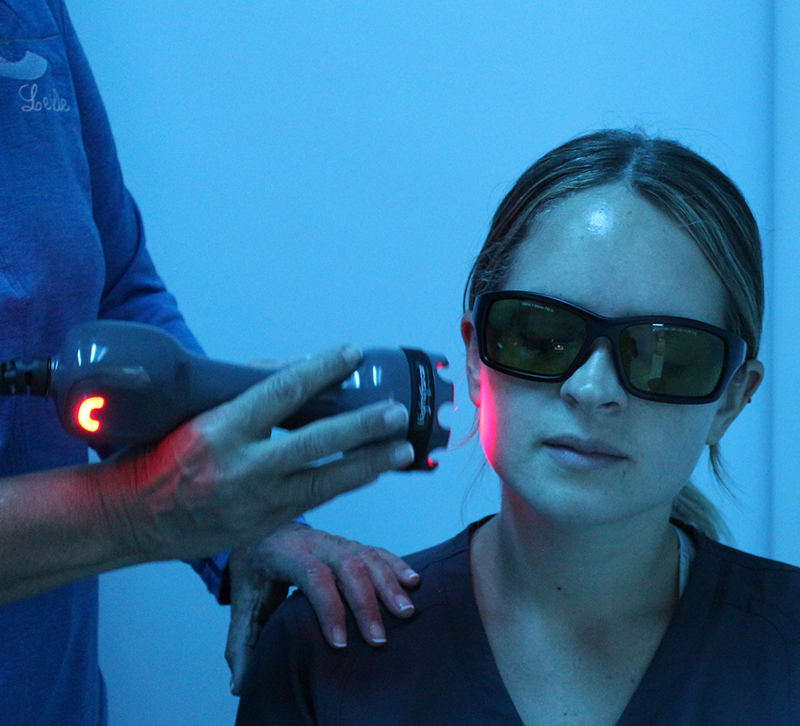Trigeminal Neuralgia
Trigeminal Neuralgia as a result of Whiplash after car accident:

Although not many studies have been done showing causality, there have been cases reported in which someone who suffers whiplash following a car accident have manifested the symptoms of trigeminal neuralgia. This situation results as a person’s face encounters the steering wheel and damage is done to the underlying nerves. Diagnostic tools such as an MRI will help locate the location of the underlying injury.
The research which has been done in this area shows the potential for delayed onset of symptoms in the face following the initial trauma. Despite the delay in the onset of symptoms, there is a clear link between the injury and the pain which occurs as it satisfies the diagnostic criteria related to Trigeminal Neuralgia including the incidence of spontaneous pain, the development within 3 months of an identifiable traumatic event, the presence of allodynia and the results imaging or neurophysiology demonstrating a neurologic lesion and its location. Furthermore, these studies indicate that the pain was not associated with any other disorder.
Trigeminal Neuralgia as a result of a Dental Procedure:
In the field of dentistry, surgical procedures are predominantly in the face increasing the incidence of nerve injury which can result in trigeminal neuralgia. The result is referred to as Anestheia Dolorosa, or a painful numbness.
With the population of patients in this area receiving treatment in this region of the body, the instance of complications is great. In one study which tracked patients after visiting the oral maxillofacial unit of a hospital for invasive surgery showed that a small percentage of patients were experiencing pain as a result of damage done to the trigeminal nerve but the lingering effects of this pain were significant. Over a third of follow up patients never had alleviation of symptoms one year post surgery. In this study, those most negatively affected were patients undergoing oral surgery, implant placement, orthognathic surgery and tooth extraction.
Post Traumatic Trigeminal Neuropathy is a common complication of oral and maxillofacial surgeries at large. Post Traumatic Trigeminal Neuropathy is pain which takes time to manifest in patients. In these cases, iatrogenic lesions of the trigeminal nerve may occur with the greatest symptoms of Post Traumatic Trigeminal Neuropathy showing in the removal of the third molar, an instance of 45-70 percent increase.
With such dramatic percentages of patients not able to see relief from symptoms, it follows that assessment of pain is needed pre, post and during treatment.
Agbaje JO, Van de Casteele E, Hiel M, Verbaanderd C, Lambrichts I, Politis C. Neuropathy of Trigeminal Nerve Branches After Oral and Maxillofacial Treatment. J Maxillofac Oral Surg. 2016 Sep;15(3):321-327. doi: 10.1007/s12663-015-0843-9. Epub 2015 Nov 11. PMID: 27752201; PMCID: PMC5048319.
Trigeminal Neuralgia as a result of a Rhytidectomy (Face Lift):
A Rhytidectomy requires the detachment of flaps of skin on either side of the face which is intended to be pulled back and reattached after manipulating the underlying tissue and the removal of excess skin. The result is a smoother face and fewer wrinkles. It is a common procedure, with over 100,000 being performed annually and trending upward. The procedure is generally performed on patients 60 years and older with 90 percent being done on women.
This procedure has implications for both motor and sensory nerves including the facial nerve (7th Cranial nerve), the Trigeminal Nerve (5th Cranial Nerve) and the greater Auricular Nerve. As the Trigeminal Nerve provides sensation to the face, damage done can lead to numbness in the cheeks and this is possible following a facelift. Although no damage is done during a successful operation, there may be trauma to the peripheral branches of the nerve which lead into the skin. Successful surgery should result in the alleviation of numbness within a few months post-surgery. No longitudinal studies show statistically significant increases in Trigeminal Neuralgia associated with Rhytidectomy but in the case of a failed surgery, Trigeminal Neuralgia could result.
Trigeminal Neuralgia as a result of a Chiari Malformations:
Chiari Malformation are defects in the structure located at the base of the skull and cerebellum. These structures are directly linked to a person’s control of balance. In the case of Chiari Malformation, the spinal cord does not have clear passage to the parts of the brainstem at the opening of the skull, this passage is called the foramen magnum. The cerebellum may extend below the foramen magnum and into the spinal canal. This malformation can result from a misshapen skull or one that is smaller than normal which results in pressing on the brain and the propulsion of the cerebellum into the canal. This added pressure results in effects on the areas blocked and the flow of cerebrospinal fluid. Chiari Malformations are classified into 4 types based on the location and extent of the malformation of the skull. This type of defect is present in less than 1 in 1000 births but its identification is becoming more common with imaging tests being done.
Trigeminal Neuralgia is an uncommon side effect of Chiari Malformations but has been explored in some case studies as potentially the only symptom of Chiari 1. Possible explanations of the relationship are vascular compression brought on by nerve root entry zones, demyelination, microischaemic changes or direct brainstem compression.
Loch-Wilkinson T, Tsimiklis C, Santoreneos S. Trigeminal neuralgia associated with Chiari 1 malformation: symptom resolution following craniocervical decompression and duroplasty: Case report and review of the literature. Surg Neurol Int. 2015 Jul 23;6(Suppl 11):S327-9. doi: 10.4103/2152-7806.161407. PMID: 26236551; PMCID: PMC4521310.
Trigeminal Neuralgia as a result of Trauma to the head or jaw:
Trigeminal Neuralgia (Unknown causes)
Trigeminal Neuralgia, also called tic douloueux, is characterized by recurrent brief periods of pain which feel like electric shocks. It affects the 5th cranial nerve, the trigeminal nerve, which is responsible for conduction of information to the forehead, check and lower jaw. Trigeminal Neuralgia is recorded in 4-13 people annually per 100,000 cases with a greater instance in women. The majority of cases are present in people over 50. Although not always the case, unidentified Trigeminal Neuralgia in children should indicate further testing for Multiple Sclerosis.
Compression of the trigeminal nerve is generally the cause and may come about due to nerve demyelination in the area of compression. Although not fully understood, the mechanism is thought to result from ectopic impulse generation resulting from the demyelinated lesion leading to ephaptic transmission. Other theories indicate grey matter as a root cause or vascular compression of the nerve root.
The bio-resonance hypothesis suggests that vibration frequency of the 5th cranial nerve the associated structures are in phase. With damage to the nerve fibers, the similar vibrating frequency is altered resulting in abnormal transmission.
Story behind the laser
Our laser process is called photobiomodulation, also known as low-level laser therapy (LLLT). In addition to increasing the speed, quality, and tensile strength of tissue repair, photobiomodulation can resolve inflammation and relieve pain.
What Customers Say
Contact Us
Call Us
Email Us
Our Location
5765 N Federal Hwy,
Boca Raton, FL 33487
